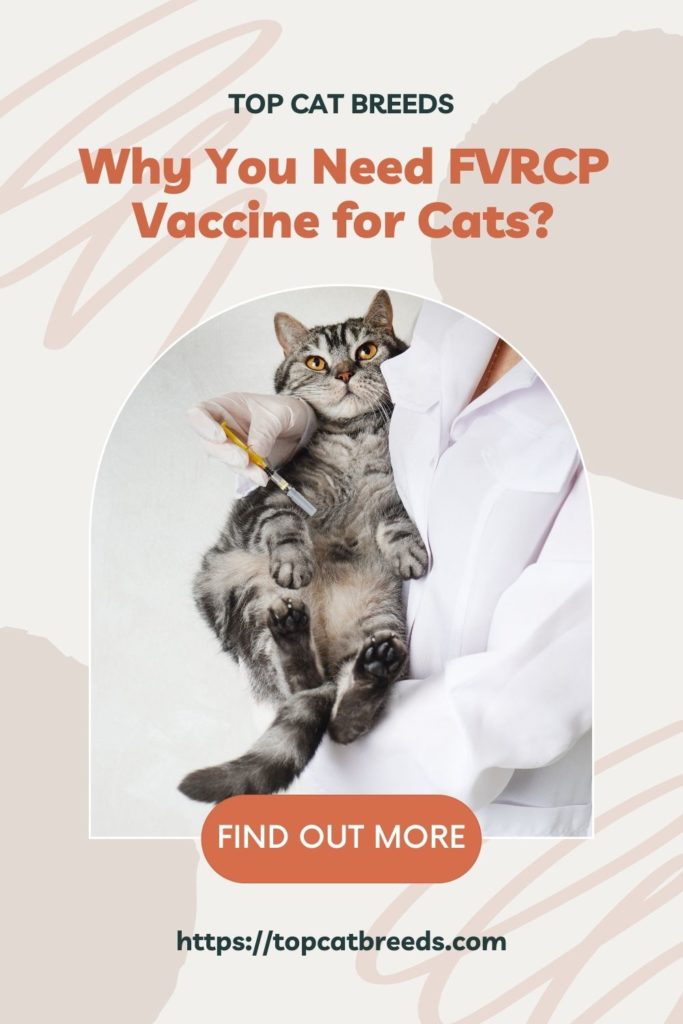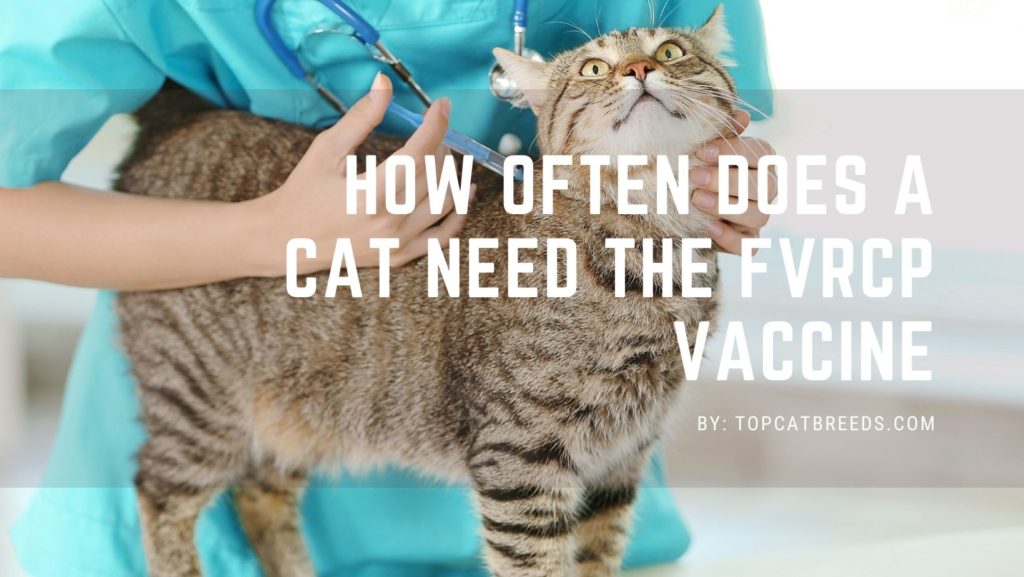Since the pandemic started, vaccinations have become the talk of the town. Vaccines have saved the lives of many since it was discovered in 1796, and have prevented the spread of life-threatening diseases since then.
Much like any other animal, our cats need vaccines for them to be protected against deadly diseases. One such vaccine is the FVRCP vaccine. The FVRCP vaccine for cats will not only keep them healthy but can also save you from vet bills!
In this article, you will learn what the vaccine is, the FVRCP vaccine cost, and when to vaccinate your cats for this vaccine.

What is the FVRCP vaccine?
The FVRCP vaccine for cats is a combination vaccine similar to a dog’s 5in1 vaccine. This means that a single vaccine vial can protect your cat from three different diseases. FVRCP stands for (F)eline (V)iral (R)hinotracheitis, feline (C)alici virus, and feline (P)anleukopenia.
The FVRCP vaccine is given to cats as part of their core vaccination program. Core vaccines are highly recommended vaccines that are given to pets to prevent them from acquiring highly fatal and highly contagious diseases. There are two core vaccines that are usually given to cats, the first is FVRCP, and the second is Rabies, which is not only essential for your cat’s health but is also required by the law in most countries.
Read also: My Cat Has Never Been Vaccinated! Should I Worry?
Feline viral rhinotracheitis
Feline viral rhinotracheitis, also known as FVR, is a viral disease caused by the feline herpesvirus type 1 or FHV-1. The virus is said to be the cause of around 80-90% of diseases involving the upper respiratory tract in cats. FVR is unique in the sense that it only affects cats and never humans or other animals such as dogs.
Herpesviruses, in general, are very contagious; in the case of FHV-1, it can infect kittens as early as a few days old, given that their mother is a carrier of the said virus. Cats infected by the virus, whether they are symptomatic or not, can easily infect indoor cats, that’s why outbreaks of this disease are common in animal shelters and breeder mills. The virus can be transmitted via direct contact through eye and nose secretions, or by indirect contact through surfaces such as feed bowls, bedding, and cat cages.
The severity of the infection varies per cat. Some of the factors that cause such variations include poor nutrition, extreme environmental conditions, immuno-suppressive medications, and other concurrent diseases. Recovered kittens can still manifest these signs even when they become adults since the virus never leaves the body. This is called a latent infection, and these cats tend to be long-time carriers of the virus.
The common clinical signs of FVR include nasal discharge, ocular discharge, fever, coughing, conjunctivitis (inflammation of the membrane surrounding the eyes), sneezing, lethargy, and loss of appetite. Those with severe eye lesions can develop scarring or worse, blindness.
Feline calicivirus
Feline calicivirus (FCV), like the feline herpesvirus type 1, is a virus that causes upper respiratory and oral diseases in cats. Like FHV1, the virus infects cats worldwide and can infect both exotic and domestic cat species.
The virus can spread easily and once a cat has been infected, the virus can be spread through the cat’s respiratory secretions and saliva. The virus can also be spread by sneezing and propelling the virus particles several meters in the air. The virus can also be spread indirectly through surfaces such as feeding bowls and cat cages.
The common clinical signs of FCV-infected cats include nose and eye discharges, conjunctivitis, nasal congestion, sneezing, and coughing. The eye and nose discharge are usually clear and transparent and can turn to a thick yellowish/greenish discharge similar to that of the feline rhinotracheitis virus. Aside from these lesions, infected cats can also develop ulcers on the gums, lips, palate, tongue, and nose. Salivation is usually present since these ulcers can be very painful. Other signs include lethargy, inappetence, fever, and vomiting.
Feline panleukopenia
Of the three components of the FVRCP vaccine, feline panleukopenia is the deadliest and most severe to cats, especially kittens. Feline panleukopenia (FP), also known as feline parvo/distemper (should not be confused with canine parvo or canine distemper since different viruses cause this), is caused by the feline parvovirus. This virus is specific to cats and does not infect humans or other animals.
Cats of all ages can be infected by feline panleukopenia, but kittens receive the short end of the stick. Cats can be infected through direct contact with infected feces (usually by ingestion of infected fecal material) or indirectly through feed/water bowls, cat cages, bedding, or even by us humans through improper disinfection. Infected cats can transmit the virus for six weeks upon infection.
Kittens starting from three or four weeks of age or unvaccinated adult cats exhibit severe gastroenteritis (inflammation of the stomach and intestines). Clinical signs include bloody diarrhea, vomiting, lethargy, inappetence, fever, or even sudden death. This happens because the virus damages the inner lining of the intestines and can then travel to the lymph nodes and bone marrow, causing a sharp decrease in the circulating white blood cells of the cat’s body, thus the name panleukopenia.
The virus can also affect fetuses if the pregnant queen becomes infected by the virus. Infected fetuses develop a condition known as cerebellar hypoplasia wherein the cerebellum, the part of the brain responsible for movement, does not develop. Once these kittens are born, they may seem alright at first, but as they age, they tend to have uncoordinated movement due to cerebellar hypoplasia.
Why do cats need the FVRCP vaccine?
There are four main reasons why your cat should be given the FVRCP vaccine:
- To avail of pet-care services like grooming, your cat needs to be fully vaccinated since most establishments such as groomers or vet clinics require your pets (dogs included) to be fully vaccinated.
- If you plan to travel with your cat, some areas or countries may require a fully accomplished vaccination record.
- To prevent the diseases mentioned above from infecting your cat.
- And lastly, to save money from hospitalization since vet bills can be expensive.
In addition, there is no specific cure for the diseases mentioned above. Only supportive and symptomatic treatment will be given to your cats should they be infected by these viruses. Prevention is the key to protecting our pets from these viruses, and the only way to prevent them is through vaccinations.
Is the FVRCP vaccine necessary for indoor cats?
Since some cats are mainly indoors, you may think that they are safe from the diseases mentioned above. Do remember that cats can be indirectly infected by these viruses since these viruses can attach themselves to surfaces of inanimate objects. Even we humans can be carriers of these diseases. Indoor cats can also sneak out of your homes when given the opportunity. So to be safe, it’s better if our cats will be vaccinated regardless if they are indoor or outdoor cats.
How often does a cat need the FVRCP vaccine?

Cat vaccination schedules vary per location. Some veterinary clinics begin vaccinating as early as six weeks of age and are given booster shots every 2 to 3 weeks until they are at 16 weeks of age. Some even recommend another dose when the cat is 6 months old.
Adult cats with an unknown vaccination record or those with no vaccines at all will be given an initial dose, followed by a booster shot after two to three weeks. FVRCP vaccines will then be given annually or every 3 years depending on the cat’s antibody levels or the recommendation of your veterinarian.
What are the side effects of the FVRCP vaccine?
Side effects of the vaccine are usually mild symptoms. Here are a some of them:
- Fever
- Inappetence
- Lethargy
- Swelling at the injection site
The chance of having a severe side effect is uncommon, however, here are some of the signs that you should watch out for:
- Anaphylaxis or allergic reaction
- Vomiting
- Diarrhea
- Dyspnea or shortness of breath
- Tumors near or at the injection site
Should these symptoms appear, contact or bring your cat to the nearest veterinary clinic as soon as possible.
How much does an FVRCP vaccine cost?
The FVRCP vaccine cost is different depending on the region. Some FVRCP vaccines cost around 10 USD and can range up to 100 USD. This will depend on the brand of the vaccine or the country or city that you are living in.
Conclusion
The FVRCP vaccine for cats prevents three highly infectious diseases that can affect your fur babies. Whether you have an indoor or outdoor cat, it’s best to vaccinate your pets since vaccination is the safest and most efficient way to protect your cats from life-threatening diseases.

